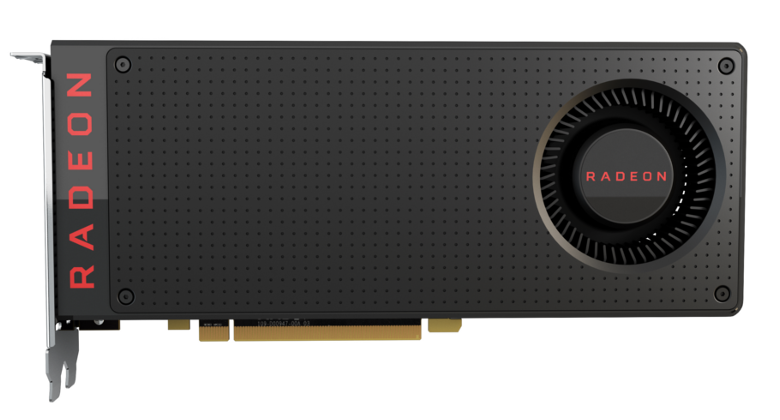If you thought the Nvidia GTX 1080 and 1070 were impressive, then behold the AMD Radeon RX 480—a normal-looking card that should again hold true the saying “don’t judge a book by its cover.” It carries some of the design cues of the Fury and Fury X flagships, including the dotted shroud and Radeon typeface. It also sports a blower style cooling solution on its face, the PCIE fingers at the bottom, and DisplayPort 1.3/1.4, HDMI 2.0b, and exhaust grille at the side. The top carries the lone 6-pin connector to fulfil the card’s 150 W power requirement.
You read that right. 150 W is all it takes to run this puppy. It achieves this thanks to the new Polaris architecture and new 14 nm FinFET manufacturing process allowing it to be more powerful than the mid-range R9 380 while sipping less power. Though details are pretty thin as of the moment, we can confirm that the RX 480 will arrive with 36 compute units; 256 GB/s of memory bandwidth; 4/8 GB GDDR5 memory on a 256-bit bus; and support for AMD FreeSync technology. In an Ashes of the Singularity benchmark, two RX 480s were able to edge a lone GTX 1080 62.5 to 58.7 fps, with prices of less than USD 500 and USD 700 respectively.
The specs should also allow the card to easily handle VR which it was made for. Currently, you can only get a proper (as in not your smartphone attached to a Google Cardboard or some similar accessory) virtual reality experience with a GPU that’s around the USD 500 mark. The RX 480, on the other hand, promises flawless VR and overall performance at a price of—drum roll please…
USD 199—around the same price as current mid-range cards but with significantly more oomph.
Quick Specs:
- Tflops: >5
- Compute Units: 36
- Memory Bandwidth: 256 GB/s
- Memory Size: 4/8 GB GDDR5
- Memory Bit Rate: 256-bit
- Power: 150 W
- VR Premium: Yes
- AMD FreeSync: Yes
- Display Port: 1.3/1.4 HDR
